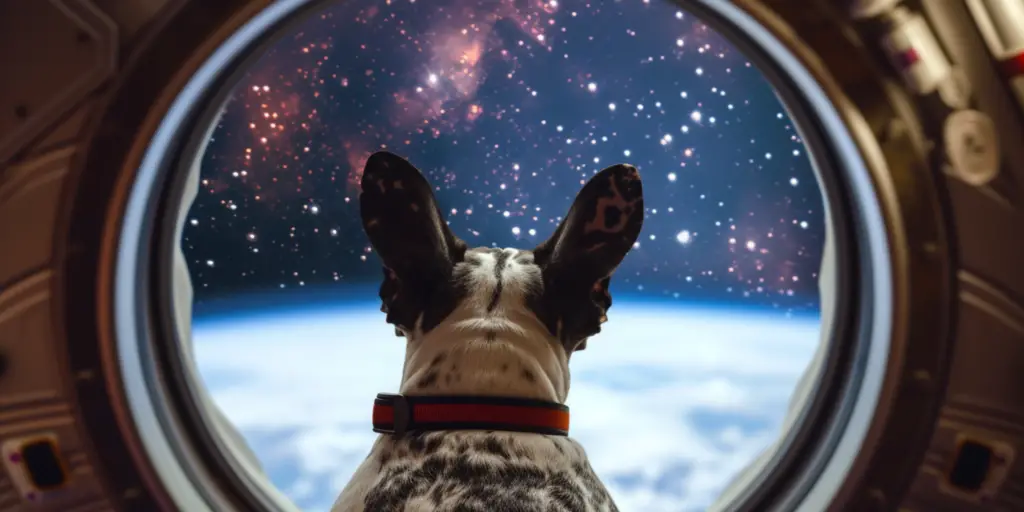Imagine blasting off into the sky, where the stars twinkle like diamonds, and the Earth floats like a blue marble beneath you. This isn’t just a dream for astronauts anymore; it’s becoming a reality for adventurers like you and me! Space tourism is opening the door to the cosmos.
Inviting us to step beyond our planet and experience the wonders of space firsthand. From the moment American businessman Dennis Tito embarked on his historic journey to the International Space Station in 2001, the realm of space has become a destination not just for scientists and explorers but for anyone with a dream and a daring spirit.
Join us on an exhilarating adventure as we dive into the story of space tourism, where the final frontier is closer than ever before.
The Beginnings of Space Tourism
The journey into space tourism embarked on a historic path at the turn of the millennium, marking a bold leap from science fiction to reality. The narrative begins with an audacious dream: to open the doors of space not just to astronauts and scientists but to anyone with the vision. It means to reach beyond Earth’s atmosphere.
The seeds of space tourism were planted by a blend of private ambition and pioneering spirit, leading to the flight of the world’s first space tourist, American businessman Dennis Tito, in April 2001.
This groundbreaking expedition was facilitated by a partnership between the Russian space agency and Space Adventures, a company specializing in space tourism.
Tito’s voyage aboard a Russian Soyuz spacecraft to the International Space Station was not merely a personal triumph but a watershed moment for space exploration, demonstrating that space could be accessible to civilians.
Tito’s historic journey set the stage for subsequent space tourists, including South African entrepreneur Mark Shuttleworth in 2002 and American businessman Gregory Olsen in 2005, further cementing the viability of commercial space travel.
These early adventurers embarked on their celestial journeys to the ISS, embracing rigorous training to prepare for the rigors of spaceflight, much like their astronaut counterparts.
This era of orbital space tourism was characterized by high costs, extensive preparation, and collaboration with international space agencies, highlighting the challenges and exclusivities of space travel.
It also underscored a growing fascination and demand for space experiences among private individuals, paving the way for an industry poised at the edge of expansion and innovation.

Who Are the Space Tourists?
Space tourists are intrepid adventurers from various walks of life, each sharing a common dream: to experience the vastness of space firsthand.
They are not traditional astronauts sent by government agencies for scientific missions; instead, they are private individuals, driven by curiosity and passion, who have embarked on the journey to the final frontier through commercial space travel opportunities.
The very first space tourist, Dennis Tito, an American businessman, marked the beginning of this new era in 2001 by spending seven days aboard the International Space Station. His journey, which cost $20 million, paved the way for others to follow in his orbital path.
Following Tito, space tourism saw a diverse group of individuals take the journey to space:
- Mark Shuttleworth, a South African entrepreneur, became the second private citizen to visit the ISS in 2002, further demonstrating the global interest in space tourism.
- Gregory Olsen, an American businessman, followed in 2005, underscoring the growing trend of private individuals participating in space travel.
- Anousheh Ansari, an Iranian-born American entrepreneur, made history in 2006 as the first female private space explorer, visiting the ISS and becoming an inspiration for countless others.
- Charles Simonyi, a Hungarian-American businessman, liked the experience so much that he visited space twice, in 2007 and again in 2009.
- Richard Garriott, a British-American video game developer and the son of an astronaut, joined the exclusive club of space tourists in 2008, highlighting a unique father-son legacy in space travel.
These pioneers in space tourism shared not only the financial means to afford their trips but also a profound desire to experience space’s unique environment. Their journeys required significant preparation, including rigorous training to withstand the physical demands of spaceflight.
The profile of space tourists is expanding with the advent of companies like SpaceX, Blue Origin, and Virgin Galactic, which aim to make space travel more accessible to a wider audience.
As the industry evolves, space tourism is set to welcome not just billionaires and entrepreneurs but also artists, scientists, and educators, broadening the scope of who can be considered a space tourist.

How Do You Get to Space?
Reaching the stars isn’t just a dream anymore; it’s a journey that begins with choosing the right spacecraft and company to launch you into the cosmos. Today, several pioneering companies offer various paths to space, each with its unique vehicles and experiences. Here’s a glimpse into how you can embark on the ultimate adventure
Space tourists traveled to the International Space Station aboard government-owned spacecraft, such as the Russian Soyuz. This route required coordination with space agencies and a substantial financial commitment. Still, it offered an authentic astronaut experience, complete with a stay on the ISS.
The landscape of space tourism has expanded with the entry of private companies, each offering distinct types of space experiences:
- SpaceX Known for its ambitious space exploration goals, SpaceX offers trips to orbit aboard its Crew Dragon spacecraft. This capsule has already carried private citizens on orbital flights, blending the lines between professional astronauts and space tourists.
- Blue Origin Founded by Jeff Bezos, Blue Origin offers suborbital flights aboard its New Shepard rocket. Passengers experience a few minutes of weightlessness and breathtaking views of Earth before returning to the planet’s surface.
- Virgin Galactic Richard Branson’s spaceflight company provides suborbital spaceflights aboard SpaceShipTwo, a spaceplane that launches from a carrier aircraft. Like Blue Origin, Virgin Galactic’s passengers experience weightlessness and the curvature of Earth.
- Axiom Space Focusing on orbital space tourism, Axiom Space plans to send private astronauts to the ISS and, eventually, its own commercial space station. Its missions promise an extended stay in space, offering a deeper immersion into the life of an astronaut.
Choosing your path to space depends on what you seek from the experience—whether it’s the thrill of a few minutes of weightlessness on a suborbital flight or the deeper adventure of living aboard the ISS.
Regardless of the choice, the journey to space begins with rigorous training, preparing you physically and mentally for the challenges and wonders of space travel.
As space tourism continues to evolve, more companies are likely to enter the arena, providing a broader array of experiences and making space accessible to more people. The dream of space travel is becoming a reality, and the sky is no longer the limit—it’s just the beginning.

What’s Next? Going Around the Moon
The next frontier in space tourism isn’t just about reaching space; it’s about circumnavigating the Moon, taking humanity’s dreams a giant leap further. This ambitious step promises to transform the narrative of space exploration, offering an unparalleled adventure to those daring enough to embark on this journey.
Space Adventures, a pioneer in space tourism, has already hinted at plans to offer circumlunar missions. These missions are not just quick trips to space but extensive journeys that will take tourists around the Moon, offering breathtaking views of the far side of our celestial neighbor that few have ever seen.
Imagine witnessing Earthrise from the Moon’s orbit, a sight that has profoundly moved the astronauts who have experienced it.
Furthermore, SpaceX is also venturing into lunar tourism with its Starship spacecraft. Elon Musk’s company has announced the #dearMoon project, spearheaded by Japanese billionaire Yusaku Maezawa.
This project aims to take a group of artists and creative individuals on a journey around the Moon, hoping to inspire them to create new art that captures the essence of their experience. This mission symbolizes the blend of exploration, science, and art, expanding the purpose and potential impact of space tourism.
These circumlunar missions signify a bold step in the evolution of space tourism, transitioning from short suborbital flights and orbital stays to deep-space exploration.
The challenges are substantial, requiring significant advancements in spacecraft technology, safety measures, and sustainable life-support systems. However, the potential rewards are immense, offering a new perspective on our place in the universe and the unifying power of shared exploration.
Fun Facts About Space Tourism
Space tourism is a realm filled with captivating narratives and interesting titbits, illustrating how it has evolved from a lofty dream into an achievable reality.
The inception of this futuristic endeavour was marked by Dennis Tito, the first private citizen to venture into space, spending eight days in orbit in 2001 and setting a precedent for future space tourists.
The cost for such an extraordinary journey initially ranged from $20 to $30 million, highlighting the exclusivity and novelty of space travel. Prospective space tourists undergo extensive training, which might include experiencing zero-gravity conditions, undergoing centrifuge tests to simulate the forces of launch and re-entry, and even learning a new language, depending on their mission specifics.
Space tourism also introduces unique experiences such as experiencing weightlessness, allowing travellers to float freely in the spacecraft, and witnessing the rapid succession of 16 sunrises and sunsets within a single day aboard the International Space Station.
Beyond the physical journey, space tourism has fostered unprecedented human stories, like that of Richard Garriott, the first second-generation American space traveller, which underscores the familial connection and personal dreams fuelling these voyages.
Anousheh Ansari marked another milestone as the first female private space explorer, emphasizing the global and inclusive appeal of space travel.
The gastronomic aspect of space tourism offers a taste of adventure, with meals prepared to accommodate the unique conditions of zero gravity, offering a blend of international Flavors.
Initiatives like the #dearMoon project, which plans to take artists around the Moon, showcase the inspirational potential of space travel, aiming to merge the worlds of creativity and exploration.
These elements combined paint a vivid picture of space tourism as an amalgam of adventure, science, personal aspiration, and human curiosity, continuously pushing the boundaries of what’s possible.
What to Think About Before You Go
Before setting your sights on the stars, there are several crucial aspects to consider about space tourism. First and foremost, it’s essential to evaluate your physical and psychological health to ensure you’re fit for the challenges of space.
The unique conditions of zero gravity can significantly impact the human body, necessitating a comprehensive health check. Additionally, the rigorous training required for space travel, including emergency procedures and adapting to zero gravity, demands both time and commitment.
The financial aspect cannot be overlooked; space tourism represents a significant investment, with costs varying widely based on the type of journey you embark on.
Understanding and accepting the inherent risks associated with space exploration is also paramount, as safety is a primary concern but cannot be guaranteed. The preparation for such an adventure goes beyond the journey itself, encompassing months of training and adjustment to your schedule.
Environmental impact of space travel, particularly the carbon footprint of rocket launches, is an essential consideration for the conscientiously minded travellers.
Reflecting on the purpose of your journey can also provide clarity and enhance the overall experience, whether you’re driven by a love of exploration, a desire for the unique sensation of weightlessness, or the pursuit of breathtaking views of Earth from above.

Final Thoughts
As we gaze upwards at the boundless expanse above us, space tourism emerges not just as a testament to human innovation and spirit but also as a bridge connecting us to the vast unknown of the cosmos.
This journey, from the pioneering voyage of Dennis Tito to the ambitious plans of circumlunar travel, reflects a profound shift in how we perceive our place in the universe. It’s an adventure that beckons with the allure of weightlessness, the breathtaking views of Earth from afar, and the sheer thrill of traversing the final frontier.
Yet, as we stand on the precipice of this new era, the path to the stars is paved with considerations—physical readiness, financial investment, environmental impacts, and the personal quest for discovery. Each prospective travellers must weigh these factors, balancing the dreams of space with the realities of its challenges.
Space tourism represents the ultimate adventure, offering an unprecedented perspective on our planet and beyond. It is a symbol of our ceaseless quest for exploration and understanding, pushing the boundaries of human experience.
As we continue to look towards the heavens, the journey of space tourism unfolds as a narrative of courage, curiosity, and the unending desire to reach beyond our limits, reminding us that the universe is not just a place to visit but a vast, unexplored home that awaits us.


